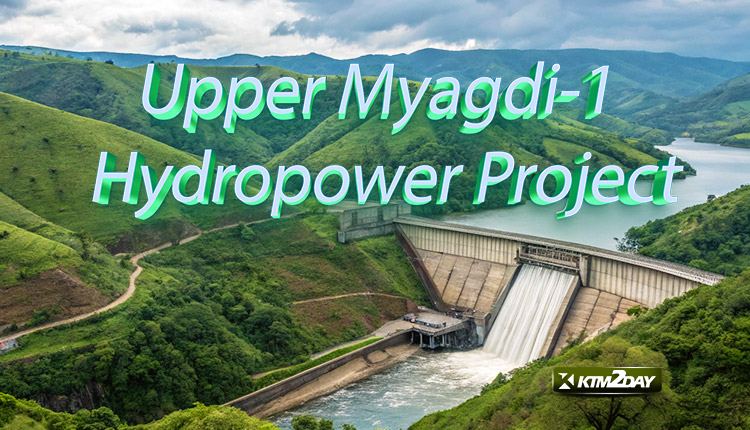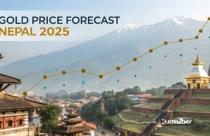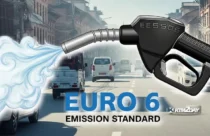Upper Myagdi-1 Hydropower Project: A Leap Forward in Nepal’s Energy Landscape


Myagdi District, Nepal – June 11, 2025 – Nepal’s ambitious journey towards energy self-sufficiency and becoming a regional power exporter is gaining significant momentum with the rapid construction of the Upper Myagdi-1 Hydropower Project.
With an impressive capacity of 53.5 megawatts (MW) and an estimated investment of 11.5 billion Nepalese Rupees (NPR), this project is set to become a vital contributor to the nation’s energy grid, showcasing a commitment to harnessing its vast hydroelectric potential.
Accelerating Towards Completion: Project Details and Progress The Upper Myagdi-1 Hydropower Project is a testament to focused engineering and determined execution. Located in the picturesque Malika Rural Municipality-7 of Myagdi District, the project has seen accelerated progress, particularly in critical infrastructure development. A key component of the project’s design is the construction of a substantial 5.7-kilometer headrace tunnel.
This tunnel, crucial for channeling water from the dam to the powerhouse with minimal energy loss, has recently commenced excavation from its outlet point in Bharbang, where the main power generation facility will be situated.

The civil construction responsibilities have been entrusted to Luna Builders and Contractors, a firm that is pushing to meet an ambitious timeline. Their target is to bring the project into operation and begin electricity production by Falgun 2083 BS (approximately March 2027 AD). This swift pace is critical for Nepal, as timely project completion directly impacts the nation’s energy supply and economic planning.
Powering the Nation: Connectivity and Output Upon its commissioning, the Upper Myagdi-1 Hydropower Project is projected to generate an average of 315.01 gigawatt-hours (GWh) of clean, renewable electricity annually. This substantial output will significantly bolster Nepal’s overall energy supply, helping to reduce reliance on imported power and supporting the country’s economic development.
To ensure efficient transmission of this generated power to the national grid, the Nepal Electricity Authority (NEA) is simultaneously constructing a crucial 132-kV substation in Dadakhet, also located in Malika-7. This high-voltage substation will act as the vital link, allowing the electricity produced by Upper Myagdi-1 to be seamlessly integrated into the central transmission line. Such robust infrastructure is essential for minimizing transmission losses and ensuring a stable and reliable power supply across the country.
Broader Implications: Nepal’s Energy Future The Upper Myagdi-1 Hydropower Project is more than just an individual power plant; it represents a significant stride in Nepal’s broader national energy strategy. The country, rich in water resources, aims to transform from an energy-deficient nation into one with a surplus, capable of exporting clean energy to neighboring countries like India. Projects of this scale are pivotal in achieving this ambitious goal, contributing to national energy security and generating much-needed export revenue.
Beyond national-level benefits, the project is expected to bring substantial positive impacts to the local community in Myagdi. During the construction phase, it has already created numerous employment opportunities for local residents, from skilled labor to administrative roles.
Post-completion, the project will continue to foster economic activity, potentially leading to improved local infrastructure, enhanced access to amenities, and increased local revenue through various channels. This localized development is crucial for equitable growth across Nepal.
However, the path to harnessing Nepal’s hydropower potential is not without its challenges. Projects often face hurdles such as complex geographical terrain, requiring advanced engineering solutions, and potential delays due to land acquisition issues or unforeseen geological conditions.
Ensuring robust financing mechanisms and maintaining strict adherence to construction timelines are common challenges that large-scale hydropower initiatives in the region frequently encounter. Despite these complexities, the Upper Myagdi-1 project’s accelerated progress serves as an encouraging example of overcoming such obstacles through dedicated effort and strategic planning.
In conclusion, the rapid construction of the Upper Myagdi-1 Hydropower Project marks a significant milestone in Nepal’s pursuit of a sustainable energy future. Its substantial power generation capacity, coupled with strategic grid integration, positions it as a key asset in the nation’s drive for energy self-sufficiency and regional energy trade.
This project not only promises to illuminate homes and power industries across Nepal but also serves as a beacon of progress in the country’s journey towards realizing its full hydroelectric potential.















